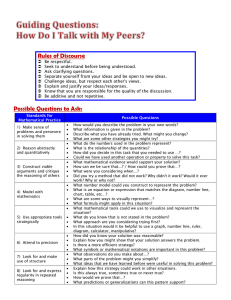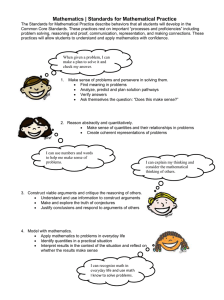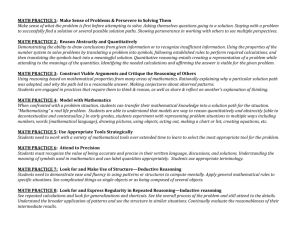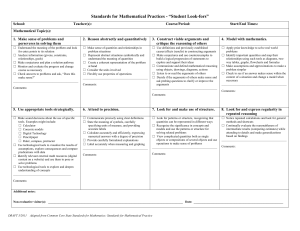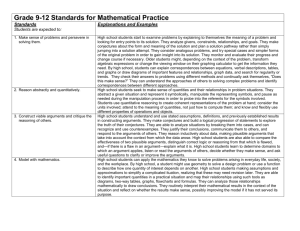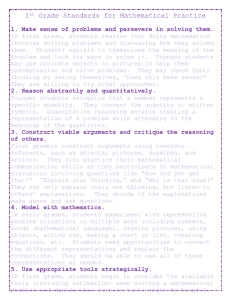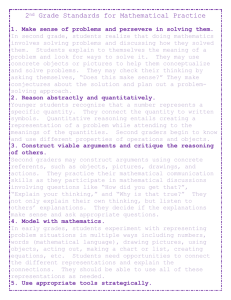Math Practice Standards Essentials
advertisement
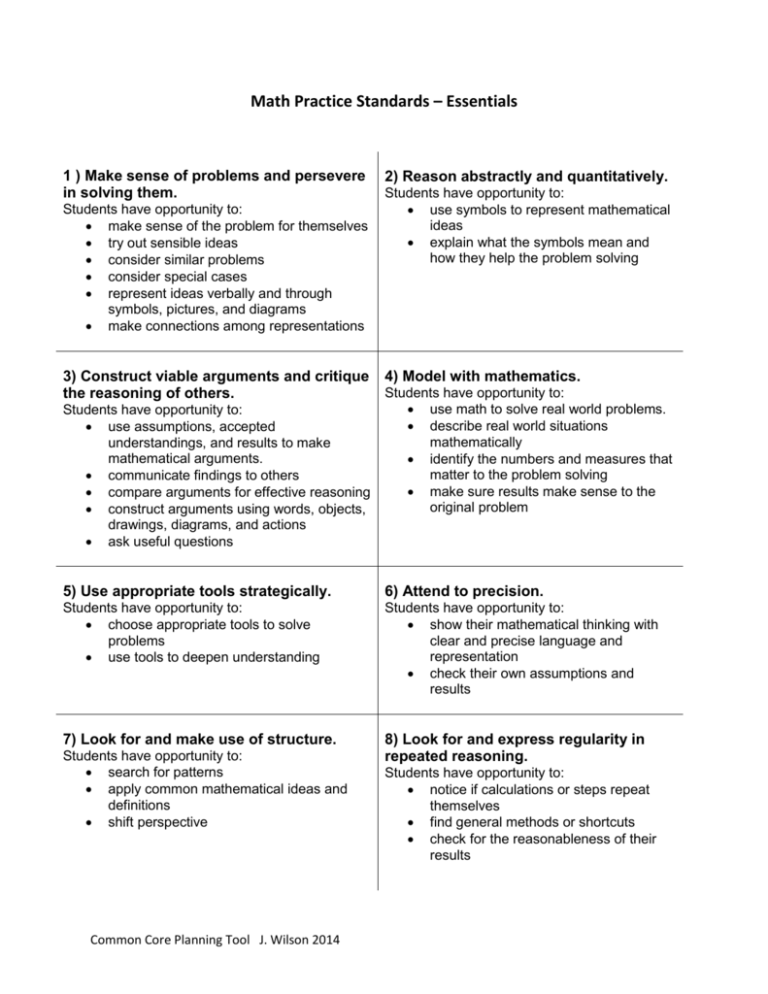
Math Practice Standards – Essentials 1 ) Make sense of problems and persevere in solving them. Students have opportunity to: make sense of the problem for themselves try out sensible ideas consider similar problems consider special cases represent ideas verbally and through symbols, pictures, and diagrams make connections among representations 3) Construct viable arguments and critique the reasoning of others. Students have opportunity to: use assumptions, accepted understandings, and results to make mathematical arguments. communicate findings to others compare arguments for effective reasoning construct arguments using words, objects, drawings, diagrams, and actions ask useful questions 2) Reason abstractly and quantitatively. Students have opportunity to: use symbols to represent mathematical ideas explain what the symbols mean and how they help the problem solving 4) Model with mathematics. Students have opportunity to: use math to solve real world problems. describe real world situations mathematically identify the numbers and measures that matter to the problem solving make sure results make sense to the original problem 5) Use appropriate tools strategically. 6) Attend to precision. Students have opportunity to: choose appropriate tools to solve problems use tools to deepen understanding Students have opportunity to: show their mathematical thinking with clear and precise language and representation check their own assumptions and results 7) Look for and make use of structure. 8) Look for and express regularity in repeated reasoning. Students have opportunity to: search for patterns apply common mathematical ideas and definitions shift perspective Common Core Planning Tool J. Wilson 2014 Students have opportunity to: notice if calculations or steps repeat themselves find general methods or shortcuts check for the reasonableness of their results
